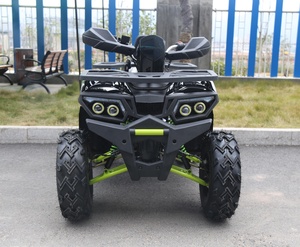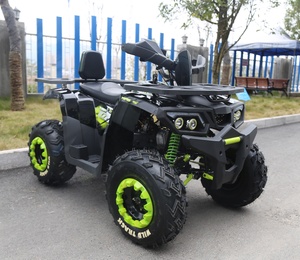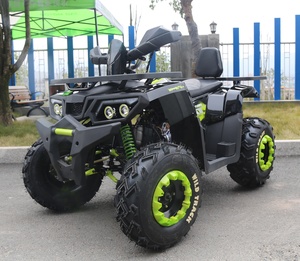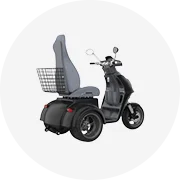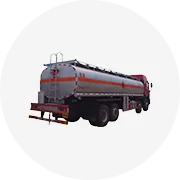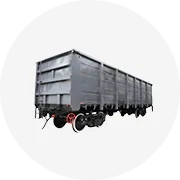Types of Motocross Dirt Bike 200cc
A 200cc dirt bike is an ideal choice for amateur riders and younger enthusiasts who are just starting to explore the world of off-road riding. These bikes strike a balance between manageable power and lightweight design, making them perfect for beginners while still offering enough performance for intermediate trail use. With various types available in the market, choosing the right one depends on your riding style, terrain preference, and intended usage.
This guide explores the five main categories of 200cc dirt bikes, each tailored for specific riding conditions and purposes:
-
Trail Dirt Bikes
Designed for recreational trail riding, these bikes are optimized for comfort and control on well-maintained off-road paths. Trail dirt bikes typically feature a relaxed suspension setup that absorbs smaller bumps and roots without being too stiff or harsh. The engine tuning prioritizes smooth and predictable power delivery, allowing newer riders to build confidence gradually.
Additional features often include wider seats for better support, adjustable handlebars for ergonomic positioning, and electric starters for hassle-free ignition. Some models also come with fuel-efficient engines and durable components designed for long-term trail use.
Advantages
- Comfortable seating and ergonomics
- Smooth engine response
- Ideal for beginners and weekend trail rides
- Electric start option available
Limitations
- Not suitable for competitive racing
- Less aggressive suspension for high-speed tracks
- Heavier than race-focused models
Best for: Recreational trail riding, beginner riders, families
-
MX Motocross Bikes
Motocross (MX) bikes are engineered for competitive racing on professional motocross circuits. These 200cc machines prioritize speed, agility, and performance over comfort. They feature lightweight aluminum or steel frames that reduce overall weight and improve maneuverability. The suspension system is highly tuned for fast-paced jumps, landings, and rough track conditions.
The engine delivers punchy mid-range power, allowing quick acceleration out of corners. MX bikes also have aggressive rider positioning to enhance aerodynamics and control at high speeds. Knobby tires provide excellent grip on muddy or sandy surfaces, and the chassis is built to withstand the rigors of racing.
Advantages
- High-performance engine tuning
- Lightweight construction
- Aggressive suspension setup
- Excellent traction and handling on tracks
Limitations
- Less comfortable for extended rides
- More expensive due to race-grade components
- Requires regular maintenance and tuning
Best for: Competitive racers, track days, experienced riders
-
Enduro Dirt Bikes
Enduro dirt bikes are built for long-distance off-road races that span multiple terrains and challenging environments. These bikes combine elements of trail and MX bikes to offer both endurance and versatility. A larger fuel tank allows for longer ride times between refuels, while the seating is designed for all-day comfort during multi-hour events.
Enduro bikes often come equipped with lighting systems for night riding, skid plates to protect the engine from rocks and debris, and bar guards to shield the handlebars. Their suspension is set up to handle technical sections like steep climbs, rocky descents, and deep ruts, making them capable of tackling unpredictable trails.
Advantages
- Long-range capability with large fuel capacity
- Robust frame and protective components
- Versatile across varied terrain types
- Comfortable for extended periods
Limitations
- Slightly heavier than MX bikes
- Engine tuning may not be as aggressive
- Higher cost due to added features
Best for: Endurance racing, multi-terrain adventures, technical trails
-
Cross-Country Dirt Bikes
Cross-country bikes blend the best attributes of motocross and enduro bikes to deliver a versatile platform for competitive off-road racing. These bikes are designed to maintain high speeds over long distances while remaining comfortable enough for riders to endure demanding courses. They typically feature a lightweight frame similar to MX bikes but with slightly softer suspension settings for improved comfort on rough terrain.
Riders benefit from a balanced riding position that supports both aggressive acceleration and relaxed posture during endurance segments. Cross-country bikes often have enhanced ergonomics and refined engine mappings to suit varying race conditions. This makes them popular among riders who compete in timed cross-country events that test both skill and stamina.
Advantages
- Well-balanced between speed and comfort
- Lightweight yet durable frame
- Adaptable to different race formats
- Great for developing riders aiming higher
Limitations
- Priced higher than basic trail models
- May not excel in pure motocross or trail-only scenarios
- Specialized use limits casual enjoyment
Best for: Competitive cross-country racing, dual-purpose training, intermediate to advanced riders
-
Recreational Dirt Bikes
These entry-level bikes are specifically designed for beginners and youth riders who are just getting into off-road riding. Recreational models focus on ease of use, safety, and simplicity. They often feature smaller engines (sometimes below 200cc) and lighter frames that are easier for new riders to manage.
With lower seat heights and softer suspension setups, these bikes allow young or inexperienced riders to develop their skills without being overwhelmed by power or weight. Many recreational dirt bikes also come with automatic transmissions or simplified controls to make learning even easier.
Advantages
- Easy to learn and control
- Safe for children and novice riders
- Affordable price point
- Low maintenance requirements
Limitations
- Limited performance for advanced riders
- Not suitable for racing or technical trails
- Fewer upgrade options compared to other types
Best for: Youth riders, beginners, backyard or light trail use
| Type | Primary Use | Engine Performance | Weight Class | Recommended For |
|---|---|---|---|---|
| Trail Dirt Bikes | Recreational trail riding | Moderate, smooth delivery | Medium-heavy | Beginners, weekend riders |
| MX Motocross Bikes | Track racing | High-performance, aggressive | Lightweight | Competitive racers, advanced riders |
| Enduro Dirt Bikes | Endurance racing | Balanced, versatile | Medium | Long-distance riders, technical terrain |
| Cross-Country Dirt Bikes | Off-road racing | Responsive, adaptable | Lightweight | Intermediate riders, dual-purpose use |
| Recreational Dirt Bikes | Learning and fun | Low to moderate | Very light | Youth riders, beginners |
Expert Tip: If you're transitioning from a recreational or trail bike to a more performance-oriented model like an MX or Enduro, consider taking lessons or attending clinics to safely adapt to the increased power and handling demands.
Specification and Maintenance of Motocross Dirt Bikes (200cc)
Motocross dirt bikes with a 200cc engine represent a popular choice among both beginner and intermediate riders due to their balanced power-to-weight ratio and manageable handling characteristics. Understanding the key specifications and maintenance practices is essential for maximizing performance, safety, and longevity.
Key Specifications of a 200cc Motocross Dirt Bike
The following are the most critical technical specifications that define the capabilities and usability of a 200cc motocross dirt bike:
Engine
At the core of every motocross dirt bike lies its engine. A 200cc engine provides a great balance between control and performance, making it ideal for younger or less experienced riders transitioning from smaller displacement models.
Most 200cc engines come in either two-stroke or four-stroke configurations. Two-stroke engines offer more explosive acceleration and lighter weight but require regular oil mixing and higher maintenance. Four-stroke variants deliver smoother power delivery and better fuel efficiency, albeit with slightly more weight and complexity.
Weight
The overall weight of a 200cc dirt bike significantly influences rider fatigue and maneuverability. Most models fall within the range of 70 to 90 kilograms, depending on frame material, suspension setup, and additional components like cooling systems or exhaust modifications.
Lighter bikes are generally easier to handle during jumps and tight turns, while heavier models may offer improved stability at higher speeds. Riders should consider their own physical strength and riding style when selecting a model.
Seat Height
Seat height is an important ergonomic specification, especially for younger or shorter riders. The typical seat height of a 200cc dirt bike ranges between 80 to 100 centimeters from the ground.
A lower seat allows for better ground reach and confidence when stopping, while taller seats often correlate with larger wheels and longer travel suspensions. Test sitting the bike before purchase can help determine if the seat height suits your leg length and comfort level.
Suspension System
Given the demanding terrain encountered in motocross, suspension plays a vital role in ride quality and control. A standard 200cc dirt bike typically features approximately 25 cm of front suspension travel and up to 30 cm of rear suspension travel.
This suspension setup enables the bike to absorb impacts from rocks, roots, and jumps effectively. High-end models may include adjustable preload, compression, and rebound damping settings to allow customization based on rider weight and terrain type.
Tires
Tires are crucial for maintaining traction and handling across various off-road conditions. Standard 200cc dirt bikes are equipped with tires approximately 60 cm in diameter, featuring deep, aggressive treads designed for muddy, sandy, or loose surfaces.
Riders can opt for different tire compounds and tread patterns based on the racing environment—softer compounds for increased grip on hard-packed tracks and harder ones for extended wear in rocky terrain.
Fuel Capacity
The fuel tank capacity of a 200cc dirt bike usually holds around 8 liters, which is sufficient for extended trail rides or race sessions without requiring frequent refueling.
This capacity ensures riders can focus on performance without interruption. Fuel tanks are typically positioned beneath the seat or integrated into the frame for optimal weight distribution and rider ergonomics.
| Component | Typical Specification | Performance Impact |
|---|---|---|
| Engine Type | 2-stroke or 4-stroke | Determines power delivery, weight, and maintenance frequency |
| Bike Weight | 70–90 kg | Influences agility, jump control, and rider endurance |
| Seat Height | 80–100 cm | Affects rider reach and confidence at stops |
| Front Suspension Travel | 25 cm | Impacts bump absorption and steering precision |
| Rear Suspension Travel | 30 cm | Determines comfort over rough terrain and landing stability |
| Tire Diameter | 60 cm | Contributes to clearance and momentum retention |
| Fuel Tank Capacity | 8 liters | Allows for extended riding duration without refueling |
Essential Maintenance Practices for 200cc Dirt Bikes
Proper maintenance not only extends the life of your 200cc dirt bike but also enhances reliability, safety, and performance. Below are critical maintenance tasks that should be performed regularly:
Important: Consistency in maintenance routines is key to ensuring long-term reliability. Skipping scheduled checks or delaying repairs can lead to costly breakdowns or dangerous situations on the track or trail. Keep a maintenance log to track service intervals and part replacements.
How to Choose a Motocross Dirt Bike (200cc)
Selecting the ideal 200cc motocross dirt bike requires careful consideration of multiple factors to ensure optimal performance, rider safety, and long-term satisfaction. Whether you're an aspiring racer or a weekend enthusiast, understanding key selection criteria will help you find the perfect match for your needs.
Rider's Age, Size, and Physical Development
One of the most critical factors in selecting a 200cc dirt bike is ensuring proper fit based on the rider's physical attributes. A well-fitting bike enhances control, reduces fatigue, and improves overall riding experience.
- Youth riders should prioritize bikes with adjustable seat heights (typically between 29-34 inches)
- Weight considerations: Lighter riders benefit from lighter overall bike weight and lower seat profiles
- Adult riders need sufficient legroom and handlebar positioning for extended riding sessions
- Bikes with modular frames allow for adjustments as riders grow and develop skills
Key measurement: The rider should be able to flat-foot both feet while seated at a stop
Brand Reputation and Model Performance
Choosing a reputable brand ensures quality engineering, reliable parts availability, and proven performance characteristics. Established manufacturers invest heavily in racing technology that trickles down to consumer models.
- Top-tier brands like Honda CRF250R (with detuned engine for 200cc versions), Yamaha YZ250F (modified displacement), and KTM 250 SX-F offer exceptional build quality
- Mid-range options provide excellent value while maintaining competitive performance
- Research recent model updates and technological advancements in suspension and engine mapping
- Check local dealership support and parts availability for quicker maintenance turnaround
Pro tip: Test ride multiple brands to discover personal preference in handling characteristics
Ergonomic Design and Riding Position
The ergonomics of a dirt bike significantly impact rider comfort and control during intense motocross sessions. Proper positioning allows for better weight distribution and maneuverability through technical sections.
- Adjustable handlebars accommodate different arm lengths and preferred riding postures
- Footpeg height affects knee bend and ground clearance during turns
- Seat shape influences rider movement across varying terrain
- Engine placement impacts front-to-rear weight balance and cornering behavior
Comfort factor: Look for bikes with ergonomic adjustability features for growing riders
Suspension System and Braking Components
High-performance suspension and braking systems are essential for competitive motocross riding. These components directly affect how the bike handles jumps, rough sections, and technical corners.
- Leading brands feature fully adjustable suspension with compression, rebound, and preload settings
- Front forks should provide smooth action while maintaining stability under heavy braking
- Rear shocks must absorb consecutive impacts without packing up
- Brake rotors and calipers should deliver consistent stopping power in various conditions
- Consider aftermarket upgrade potential when evaluating stock components
Performance note: Factory-tuned suspension kits can significantly improve track performance
Buying Advice: When purchasing your first 200cc motocross bike, consider buying last year's model. You'll often find significant discounts while still getting essentially the same performance, allowing budget allocation toward protective gear or initial modifications.
| Primary Use | Recommended Feature Set | Price Range | Expected Ownership Duration |
|---|---|---|---|
| Youth training | Adjustable suspension, electric start, lightweight frame | $3,500 - $5,000 | 2-4 years (growth period) |
| Amateur racing | Full suspension adjustment, high-quality brakes, race-tuned engine | $5,000 - $6,500 | 3-5 years (with upgrades) |
| Weekend recreation | Durable components, comfortable ergonomics, reliable starting system | $4,000 - $5,500 | 5+ years with proper maintenance |
| Professional development | Factory-spec suspension, competition-grade engine, adjustable mapping | $6,500 - $8,000 | 1-2 years (competitive upgrading) |
Safety Considerations and Protective Gear
Motocross inherently involves risks that require comprehensive safety precautions beyond just the bike itself. Proper preparation and equipment significantly reduce injury potential while maximizing confidence on the track.
- DOT-approved helmets with full-face protection are mandatory
- Impact-resistant goggles with anti-fog coating for visibility
- Multi-piece MX gear including chest protector, pants, jersey, and gloves
- Boots with reinforced ankles and oil-resistant soles
- Body armor with CE certification standards
- Electric start systems improve safety by reducing kick-start related injuries
Critical check: Always inspect kill switch functionality before each ride session
Budget Planning and Total Cost of Ownership
Understanding the complete financial commitment involved in owning and operating a 200cc motocross dirt bike helps avoid unexpected expenses and ensures continued enjoyment without interruption.
- Purchase price typically represents only 40-50% of first-year costs
- Regular maintenance intervals (oil changes, chain/sprocket replacement)
- Tire replacements every 10-20 hours of riding depending on terrain
- Suspension servicing every 15-20 hours for optimal performance
- Track day fees and travel expenses for competitive riders
- Upgrades and wear items (brake pads, filters, etc.) over time
Smart strategy: Allocate 15-20% of purchase price annually for maintenance and consumables
Comprehensive DIY Guide to Replacing Motocross Dirt Bike Parts (200cc)
Replacing parts on your 200cc motocross dirt bike can be a rewarding and cost-effective way to maintain or upgrade your machine. Whether you're replacing worn components or installing performance upgrades, having the right tools and following proper procedures is essential for a successful outcome. This guide provides a detailed walkthrough of the tools required, preparation steps, part replacement process, and safety considerations.
Safety Reminder: Always ensure the bike is securely supported when lifting or working underneath. Wear protective gloves, eye protection, and appropriate clothing to prevent injury during maintenance tasks.
Essential Tools for 200cc Dirt Bike Repairs
Before starting any repair or replacement task, gather all necessary tools to avoid interruptions. Here’s a comprehensive list of tools commonly needed:
- Mechanic's Tool Kit – Includes open-end wrenches, sockets (metric and SAE), ratchets, screwdrivers (flathead and Phillips), pliers, Allen keys, and Torx bits.
- Torque Wrench – Ensures bolts are tightened to the manufacturer’s specifications, preventing under- or over-tightening which can lead to damage or failure.
- Air Compressor with Tire Inflator – Useful for cleaning debris from tight spaces and inflating tires after repairs.
- Chain Lubrication Kit – Includes chain cleaner, lubricant, and applicator for maintaining optimal drivetrain performance.
- Fuel System Cleaning Kit – Helps clean carburetors or fuel injectors, especially if replacing fuel-related components or addressing performance issues.
- Owner's Manual or Service Manual – Provides critical information about torque specs, part numbers, and assembly diagrams specific to your model.
Pro Tip: Label each tool as you unpack it and keep them organized in a magnetic tray or labeled containers. This helps prevent misplacing small fasteners and ensures nothing is left behind after reassembly.
Step-by-Step Replacement Procedure
- Gather Tools and Replacement Parts
Ensure you have both the correct tools and OEM or compatible aftermarket parts before beginning. For example, replacing handlebar grips will require a new set of grips, grip glue or a screwdriver (depending on style), and possibly heat-resistant gloves if using a heat gun to remove stubborn grips.
- Prepare the Work Area and Bike
- Clean the bike thoroughly, especially around the area where work will be done. Use a degreaser for oily spots and compressed air for hard-to-reach areas.
- Place the bike on a sturdy stand or center stand to provide better access and stability.
- Disconnect the battery if working near electrical components to avoid short circuits.
- Remove the Old Part Safely
Work methodically to avoid damaging surrounding components. For instance, when removing a damaged fairing:
- Identify and label all screws, clips, and connectors attached to the fairing.
- Use a plastic pry tool to gently release plastic tabs without breaking them.
- Keep all removed fasteners in a labeled container for easy retrieval later.
- Install the New Component
Align the new part carefully with mounting points and secure it using the appropriate fasteners. Apply threadlocker on bolts that are prone to vibration loosening. For example, when installing new brake pads:
- Slide the caliper off the rotor if necessary.
- Insert the new brake pads into the caliper bracket.
- Reinstall the caliper and torque the bolts to the recommended specification.
- Pump the brake lever several times to seat the pads properly before riding.
- Test and Verify Functionality
After installation, test the component to ensure it works correctly. If you replaced the throttle tube or grip:
- Twist the throttle fully to check for smooth operation and return action.
- Check for binding or resistance that could affect performance or safety.
- Clean Up and Proper Disposal
- Wipe down the bike to remove any grease or residue from the work area.
- Dispose of old parts such as worn-out brake pads or used oil responsibly according to local environmental regulations.
- Organize your tools and store them properly for future use.
| Repair Task | Required Tools | Estimated Time | Common Challenges |
|---|---|---|---|
| Handlebar Grip Replacement | Screwdriver, grip glue, heat gun (optional) | 15–30 minutes | Removing old grips without damaging handlebars |
| Brake Pad Installation | Socket set, C-clamp, torque wrench | 20–40 minutes | Caliper alignment and pad seating |
| Fairing Removal & Installation | Allen keys, plastic pry tools, zip ties | 30–60 minutes | Losing small clips or misaligning panels |
| Chain Lubrication | Chain cleaner, lubricant, rag | 15–25 minutes | Incomplete cleaning or over-lubrication |
DIY Insight: Take photos at every stage of disassembly. These visual references can be invaluable when reassembling complex components like engine covers or suspension linkages.
Final Tips for Successful Repairs
- Always double-check that all fasteners are torqued to the manufacturer's specifications, especially those related to wheels, brakes, and suspension.
- Use fresh fluids when applicable—especially coolant, brake fluid, and fork oil—to ensure peak performance.
- If you encounter unexpected resistance or difficulty, refer back to the service manual or consult experienced riders online via forums or social media groups.
- Keep a maintenance log to track replacements, service intervals, and modifications made to your bike.
With the right tools, careful planning, and attention to detail, replacing parts on your 200cc motocross dirt bike can be a satisfying experience that keeps your ride in top condition while saving money on labor costs.
Frequently Asked Questions About 200cc Dirt Bikes
The top speed of a 200cc dirt bike typically ranges between 30 to 40 mph, though this can vary based on several factors such as the specific make and model, rider weight, terrain type, and engine tuning. For example, high-performance models with optimized gearing or modified engines may reach speeds up to 50 mph under ideal conditions.
It's also important to note that:
- Rider experience: More skilled riders may extract higher performance from the same bike.
- Terrain: Flat, smooth surfaces allow for higher speeds compared to rough, muddy, or uphill trails.
- Engine type: Two-stroke 200cc engines often offer quicker acceleration than four-strokes, while four-strokes tend to provide smoother power delivery.
A 200cc dirt bike is an excellent choice for beginner riders aged 12 years and older. It strikes a balance between manageable size and sufficient power to build riding skills without overwhelming the rider. The bike’s design usually includes:
- Lightweight chassis: Easier to handle and maneuver during learning phases.
- Adjustable suspension: Can be tailored to the rider’s skill level and terrain.
- Responsive throttle: Provides enough power to learn control without being too aggressive.
For younger or less experienced riders (under 12), additional supervision is recommended, and starting with a smaller displacement like 125cc might be more appropriate until they gain confidence and develop basic off-road riding techniques.
Regular oil changes are essential for maintaining the performance and longevity of a 200cc dirt bike engine. As a general maintenance guideline, you should change the oil:
- Every 10 hours of engine runtime
- After every 5–7 rides, whichever comes first
In particularly dusty or demanding conditions, it's advisable to shorten the interval even further to prevent premature engine wear. Using high-quality synthetic or semi-synthetic oils specifically designed for off-road motorcycles can also help protect internal components and improve engine efficiency.
Additional oil maintenance tips include:
- Always replace the oil filter when changing oil (if applicable).
- Warm the engine slightly before draining to ensure better flow and complete removal of old oil.
- Check manufacturer recommendations in your owner’s manual for precise intervals and specifications.
Yes, 200cc dirt bikes are well-suited for tackling steep hills and various types of challenging off-road terrain. They are engineered with features that enhance their climbing ability and trail performance, including:
- Optimized torque curves: Provide sufficient low-end power for hill climbs.
- Durable tires: Offer deep treads for improved grip on mud, sand, and rocky surfaces.
- Lightweight yet sturdy frames: Allow for better handling and maneuverability in tight or technical sections.
- High ground clearance: Reduces the risk of bottoming out on rough trails.
While a 200cc engine may not have the brute strength of larger displacement models (like 250cc or 450cc), it still delivers a great combination of agility and power for recreational and intermediate-level trail use. Riders can optimize hill-climbing performance by adjusting gear ratios or practicing proper body positioning and throttle control techniques.






















